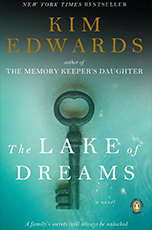Managing Food Waste for a Healthier Environment
 Freelance journalist Jonathan Bloom is on a mission. With his book American Wasteland: How America Throws Away Nearly Half of Its Food (and What We Can Do About It), he hopes to educate people and open their eyes to the way the average American household carelessly manages food waste. In a world where innumerable people go hungry, even millions here in the U.S., it is a travesty that almost half of American crops end up in landfills. The tons of rotting food release methane gas into the atmosphere, thus harming the environment by contributing to the greenhouse effect. Through meticulous research and field-work, Bloom follows the food cycle from farms to the kitchen trash can, and documents the waste that goes on at all levels. A review in The Seattle Times calls the journalist “a fanatic against food waste”, and it is this fanaticism that drives him to study the economic and moral issues of how we as a nation treat our food, and come up with innovative solutions to the problem.
Freelance journalist Jonathan Bloom is on a mission. With his book American Wasteland: How America Throws Away Nearly Half of Its Food (and What We Can Do About It), he hopes to educate people and open their eyes to the way the average American household carelessly manages food waste. In a world where innumerable people go hungry, even millions here in the U.S., it is a travesty that almost half of American crops end up in landfills. The tons of rotting food release methane gas into the atmosphere, thus harming the environment by contributing to the greenhouse effect. Through meticulous research and field-work, Bloom follows the food cycle from farms to the kitchen trash can, and documents the waste that goes on at all levels. A review in The Seattle Times calls the journalist “a fanatic against food waste”, and it is this fanaticism that drives him to study the economic and moral issues of how we as a nation treat our food, and come up with innovative solutions to the problem.
According to the The Seattle Times, Bloom’s strategy for change is three-pronged: “Establish a national food-recovery coordinator, create a national public-service campaign to raise awareness about food waste, and ban food from landfills.” He feels these changes are necessary to foster a healthier environment and will help with the distribution of food to the needy. Most of us are not malicious food wasters, but if we make a few minor changes to our daily habits and be more conscious of our food practices, we can help our communities at large. In addition to his discourse on food waste, the author has provided a list of websites in his book that can help consumers find information about meal planning, food banks and donating to the hungry, reducing waste in the food service industries, and more.

